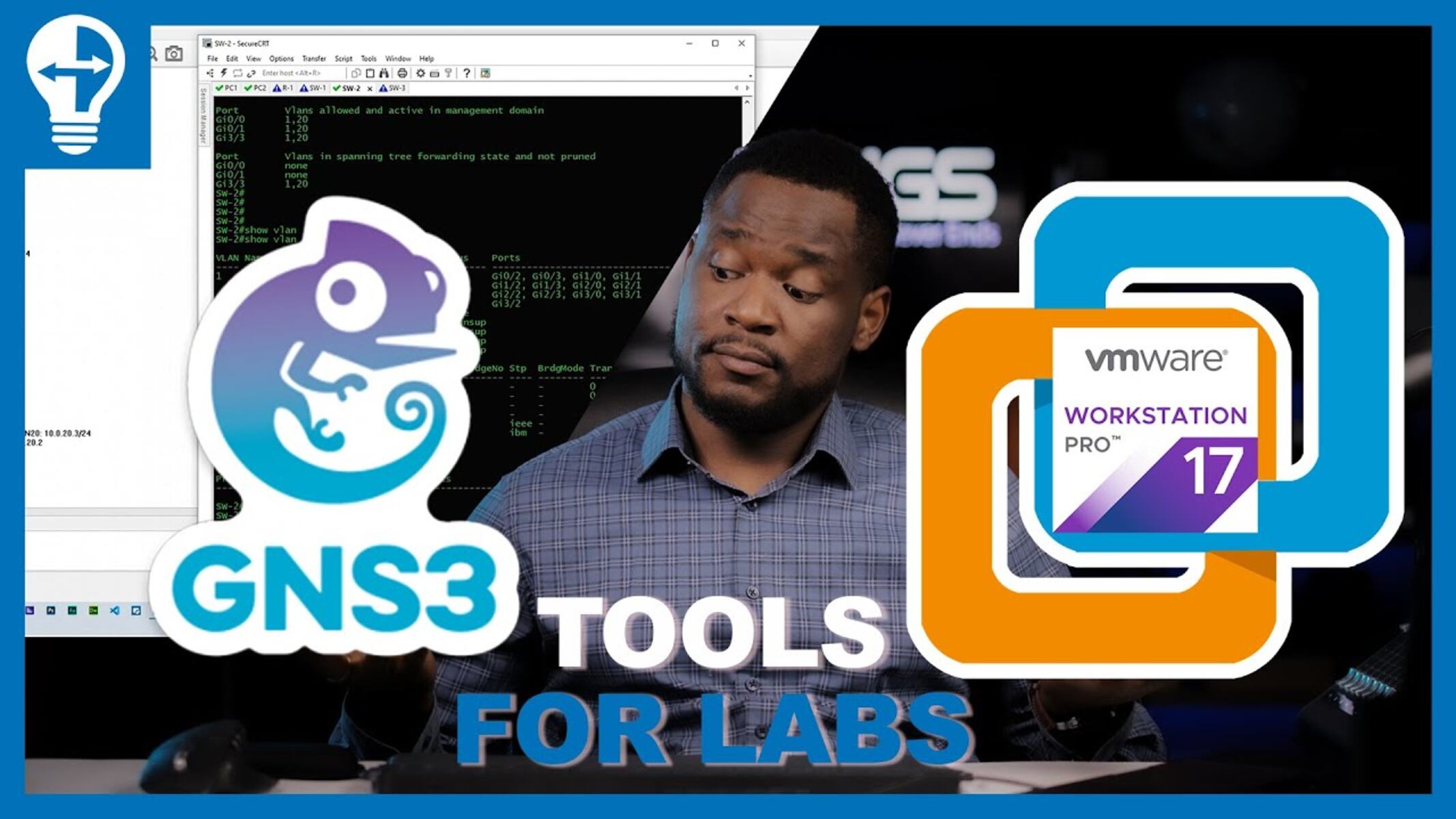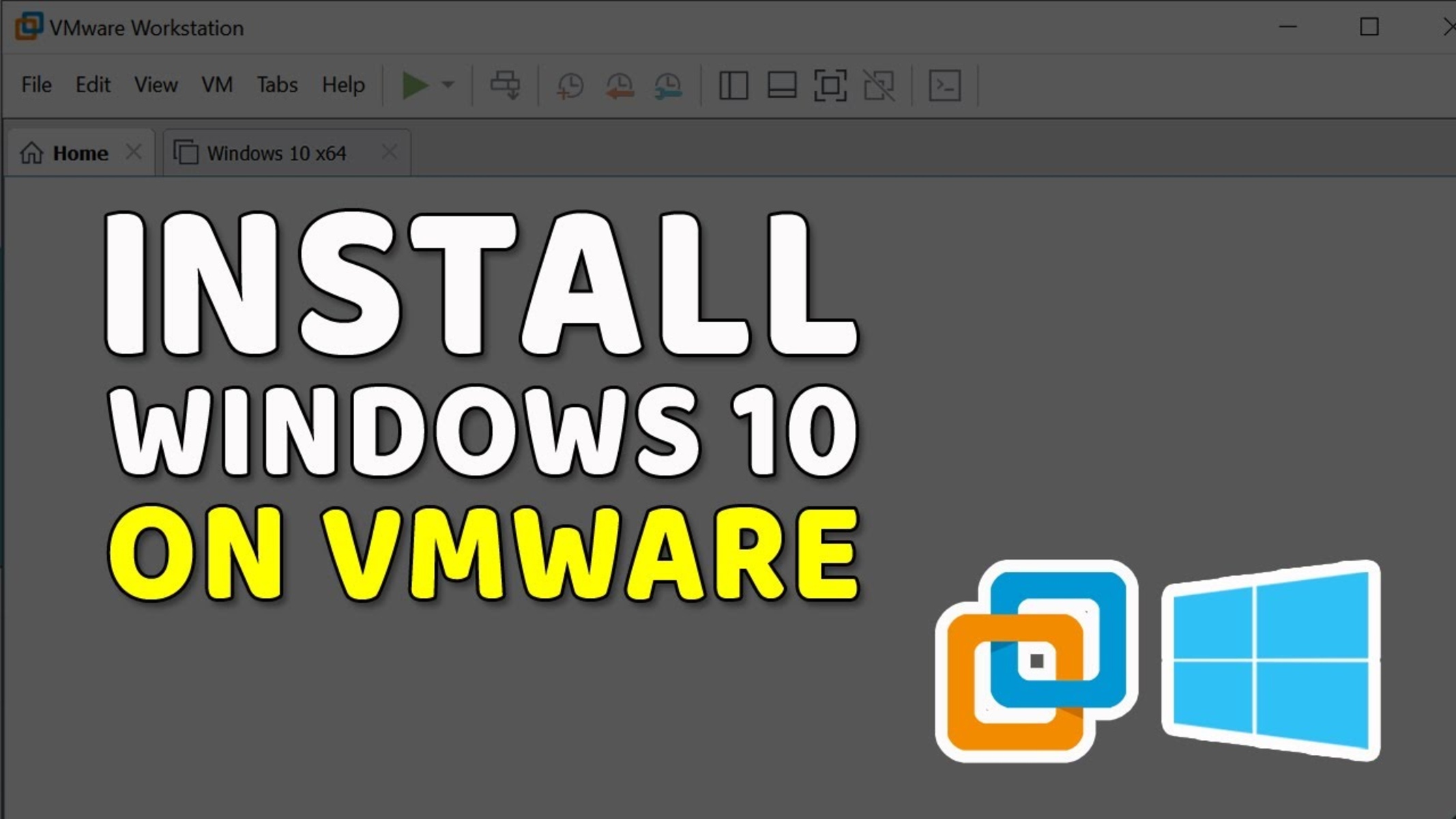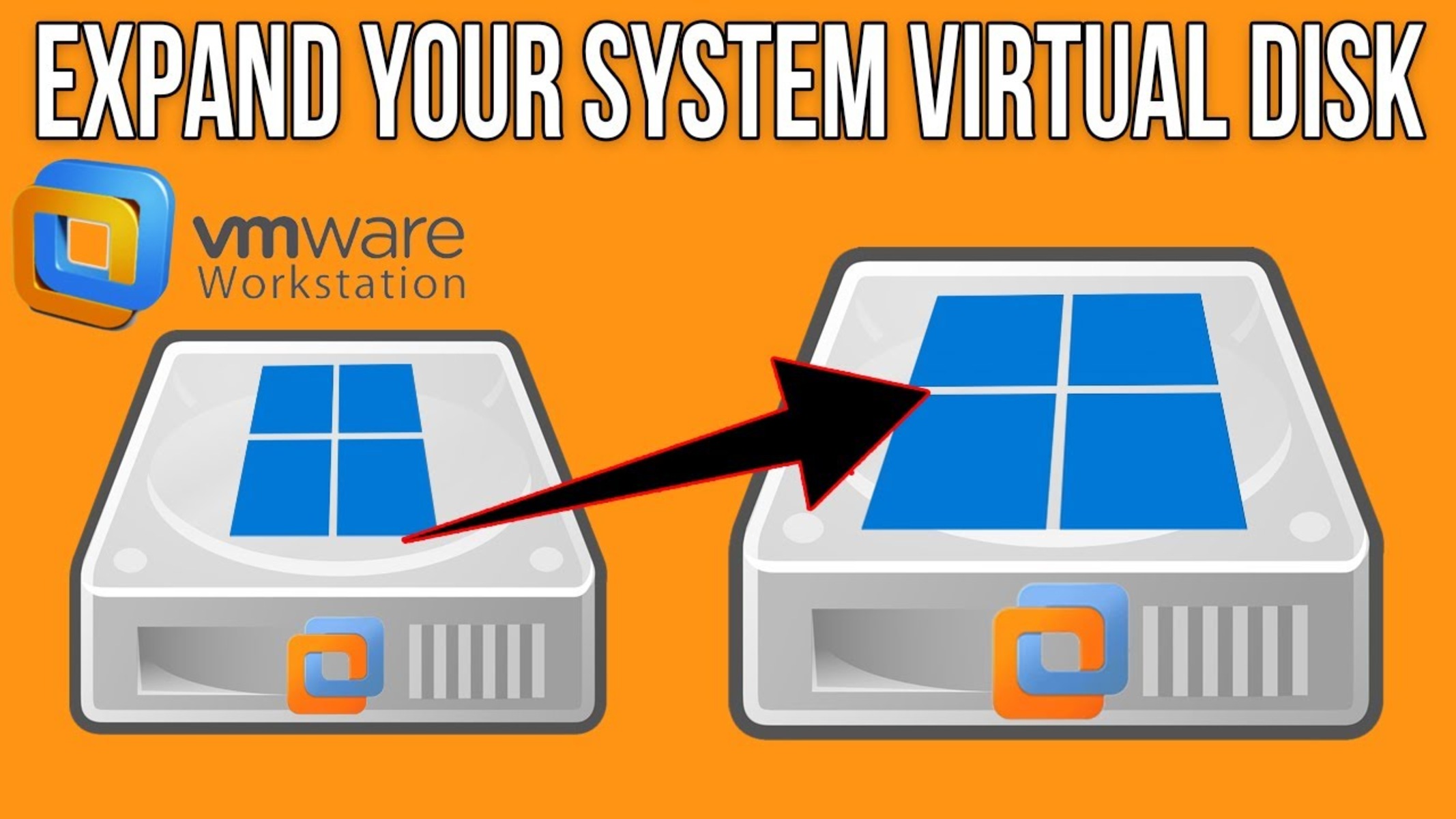Introduction
Welcome to the world of GNS3, a powerful network simulator that allows you to design, build, and test complex network topologies without the need for physical hardware. With GNS3, you can create a virtual network environment, complete with routers, switches, and other networking devices, enabling you to practice and experiment with network configurations.
One crucial component of using GNS3 is the GNS3 VM, a virtual machine that serves as the backbone of the simulation. The GNS3 VM acts as a bridge between GNS3 and the virtualization software, allowing you to run the network applications smoothly.
In this tutorial, we will guide you through the process of connecting the GNS3 VM in VMware Workstation, one of the leading virtualization software solutions. By establishing this connection, you will be able to harness the full power of GNS3 in a VMware environment, making your network simulations more robust and efficient.
Whether you are a network engineer, a student studying networking, or simply a curious individual looking to explore the capabilities of GNS3, this tutorial will provide you with the necessary steps to connect GNS3 VM in VMware Workstation.
Before we dive into the technical details, it is essential to note that this tutorial assumes you have a basic understanding of VMware Workstation and GNS3. If you are unfamiliar with either of these tools, we recommend familiarizing yourself with them before proceeding.
Now, let’s get started and learn how to connect GNS3 VM in VMware Workstation, opening up a whole new realm of possibilities for your network simulations!
Prerequisites
Before we begin the process of connecting GNS3 VM in VMware Workstation, there are a few prerequisites that need to be met. Ensuring that you have the following requirements in place will help facilitate a smooth and successful integration:
- A computer capable of running VMware Workstation: Make sure that your system meets the minimum requirements for running VMware Workstation. These requirements typically include a compatible operating system, sufficient RAM, and disk space.
- Download GNS3: Visit the official GNS3 website and download the latest version of the software. GNS3 is an open-source network emulator that allows you to create and simulate network topologies, making it an excellent tool for network engineers and enthusiasts.
- Install VMware Workstation: If you haven’t already, download and install VMware Workstation from the VMware website. VMware Workstation is one of the most popular virtualization software solutions available, allowing you to run multiple virtual machines on a single physical machine.
- GNS3 VM: Download the GNS3 VM image from the GNS3 website. The GNS3 VM acts as a virtual machine that runs on VMware Workstation and connects to the GNS3 software. It provides the necessary networking services and acts as a bridge between GNS3 and VMware Workstation.
- Virtualization Technology (VT-x/AMD-V) enabled in BIOS: Before proceeding with the GNS3 VM setup, ensure that your computer’s BIOS settings have Virtualization Technology (VT-x for Intel processors or AMD-V for AMD processors) enabled. This technology is required to run virtual machines smoothly on your system.
- Adequate system resources: Running virtual machines can be resource-intensive, so make sure your computer has sufficient CPU, RAM, and storage space to accommodate the GNS3 VM and the virtual network simulations you plan to create.
- Basic networking knowledge: While this tutorial aims to guide you through the process of connecting GNS3 VM in VMware Workstation, it assumes a basic understanding of networking concepts and terminology. Familiarize yourself with networking fundamentals to make the most of GNS3’s capabilities.
By meeting these prerequisites, you will be well-equipped to proceed with the GNS3 VM setup in VMware Workstation successfully. Now that we have ensured a solid foundation for our integration, let’s move on to the next steps of this tutorial and connect GNS3 VM in VMware Workstation.
Step 1: Download GNS3 VM
The first step in connecting GNS3 VM in VMware Workstation is to download the GNS3 VM image. The GNS3 VM serves as the virtual machine that runs on VMware Workstation and acts as a bridge between GNS3 and the virtualization software.
To download the GNS3 VM, follow these steps:
- Visit the official GNS3 website:
- Head to the Downloads page:
- Select the GNS3 VM:
- Verify the download:
- Extract the downloaded file:
Open your web browser and navigate to the official GNS3 website at https://www.gns3.com/.
On the GNS3 website, locate the “Downloads” section. Click on it to access the downloads page.
On the downloads page, find the GNS3 VM section. Here, you will find the available versions of the GNS3 VM. Choose the version that is compatible with your system and click on the download link.
Once the download is complete, verify the integrity of the downloaded file. You can do this by comparing the checksum provided on the GNS3 website with the one calculated for your downloaded file. This step ensures that the file has not been corrupted during the download.
If the GNS3 VM file is compressed (e.g., in a .zip or .gz format), use a file extraction tool such as WinRAR or 7-Zip to extract the contents of the file to a location on your computer.
Once you have completed these steps, you have successfully downloaded the GNS3 VM. You are now ready to proceed to the next step, where we will install VMware Workstation.
Step 2: Install VMware Workstation
After downloading the GNS3 VM, the next step in connecting GNS3 VM in VMware Workstation is to install VMware Workstation. VMware Workstation is a powerful virtualization software that allows you to run multiple virtual machines on your computer.
To install VMware Workstation, follow these steps:
- Locate the downloaded VMware Workstation setup file:
- Run the VMware Workstation installer:
- Accept the license agreement:
- Choose the installation location:
- Select additional features (optional):
- Start the installation:
- Complete the installation:
Open the folder where you saved the downloaded VMware Workstation setup file. The file name typically ends with “.exe” for Windows or “.dmg” for macOS.
Double-click on the VMware Workstation setup file to run the installer. If prompted by your system’s security measures, confirm that you want to run the installer.
Read and accept the end-user license agreement (EULA) provided by VMware. Accepting the agreement will allow you to proceed with the installation.
Select the destination folder where you want to install VMware Workstation. By default, the installer suggests a location, but you can change it if desired.
During the installation process, you will have the option to select additional features such as USB device support and network settings. Customize these settings according to your preferences.
Once you have configured the installation settings, click on the “Install” button to begin the installation process. The installer will copy the necessary files and configure VMware Workstation on your system.
After the installation is complete, you will see a completion message. Click on the “Finish” button to exit the installer and launch VMware Workstation.
You have now successfully installed VMware Workstation on your computer. In the next step, we will configure VMware Workstation in preparation for connecting the GNS3 VM.
Step 3: Configure VMware Workstation
After installing VMware Workstation, the next step in connecting GNS3 VM in VMware Workstation is to configure the software to ensure optimal performance and compatibility with the GNS3 VM. This step involves adjusting various settings to create a seamless integration between the two.
Follow these steps to configure VMware Workstation:
- Launch VMware Workstation:
- Check for updates (optional):
- Open the preferences:
- Configure the virtual network settings:
- Adjust other settings (optional):
- Save the changes:
Open the VMware Workstation application on your computer. You can typically find it in your list of installed programs or through the desktop or Start menu shortcuts.
Before proceeding with the configuration, it is recommended to check for updates for VMware Workstation. Open the “Help” menu and select the “Check for Updates” option. If any updates are available, follow the prompts to download and install them.
In the VMware Workstation menu, click on “Edit” and select “Preferences” to open the preferences window. This is where you can configure various settings for VMware Workstation.
In the preferences window, navigate to the “Network” section. Here, you can configure the virtual network settings that will be used for the GNS3 VM. Ensure that the “Use local DHCP service to distribute IP address to VMs” option is enabled.
Explore the different sections of the preferences window to adjust other settings according to your requirements. You can customize options related to virtual machines, memory, CPU, I/O, and more.
After configuring the necessary settings, click on the “OK” or “Apply” button to save the changes and close the preferences window.
You have now successfully configured VMware Workstation to prepare for the connection of GNS3 VM. In the next step, we will import the GNS3 VM into VMware Workstation.
Step 4: Import GNS3 VM into VMware Workstation
Once you have configured VMware Workstation, the next step in connecting GNS3 VM in VMware Workstation is to import the GNS3 VM image into VMware Workstation. This process involves creating a new virtual machine and configuring it with the GNS3 VM settings.
Follow these steps to import the GNS3 VM into VMware Workstation:
- Launch VMware Workstation:
- Select “Create a New Virtual Machine”:
- Choose “I will install the operating system later”:
- Select “Linux” as the guest operating system:
- Configure the virtual machine:
- Power on the virtual machine:
Open the VMware Workstation application on your computer if it is not already running.
In the VMware Workstation home screen, click on the “Create a New Virtual Machine” option. This will start the virtual machine creation wizard.
In the virtual machine creation wizard, select the option “I will install the operating system later” and click “Next”.
In the next step of the wizard, choose “Linux” as the guest operating system and select the version that matches the GNS3 VM you downloaded. If the exact version is not listed, choose the closest match. Click “Next” to proceed.
Specify a name and location for your virtual machine. Choose a location where you want to store the virtual machine files. You can choose the default settings for CPU, memory, and network adapter, but make sure to select the option “Use an existing virtual disk” and browse to the location of the GNS3 VM image file you previously downloaded. Click “Finish” to complete the virtual machine creation.
Once the virtual machine is created, select it from the VMware Workstation home screen and click on the “Play virtual machine” button to power it on.
Congratulations! You have successfully imported the GNS3 VM into VMware Workstation. In the next step, we will configure the network settings for the GNS3 VM to establish the connection.
Step 5: Configure Network Settings for GNS3 VM
After importing the GNS3 VM into VMware Workstation, the next step in connecting GNS3 VM in VMware Workstation is to configure the network settings for the GNS3 VM. This involves setting up the network adapter for the virtual machine to ensure proper communication with the GNS3 software.
Follow these steps to configure the network settings for the GNS3 VM:
- Power off the GNS3 VM:
- Select the GNS3 VM in VMware Workstation:
- Click on “Edit virtual machine settings”:
- Select the Network Adapter:
- Configure the network settings:
- Save the changes:
If the GNS3 VM is currently running, shut it down before proceeding with the network configuration.
In VMware Workstation, select the GNS3 VM from the list of virtual machines.
In the toolbar of VMware Workstation, click on the “Edit virtual machine settings” button. This will open the virtual machine settings window.
In the virtual machine settings, click on the “Network Adapter” option. Ensure that it is set to the appropriate network adapter type (e.g., “Bridged”, “NAT”, or “Host-only”) depending on your network configuration.
Adjust the network settings according to your requirements. For example, if you are using the “Bridged” network adapter, you can select the network interface that your physical machine is connected to. If you are using the “NAT” or “Host-only” adapter, you may need to update the IP settings manually.
Once you have configured the network settings, click on the “OK” button to save the changes and close the virtual machine settings window.
You have now successfully configured the network settings for the GNS3 VM in VMware Workstation. In the next step, we will start the GNS3 VM.
Step 6: Start GNS3 VM
After configuring the network settings for the GNS3 VM in VMware Workstation, the next step in connecting GNS3 VM in VMware Workstation is to start the GNS3 VM. By starting the GNS3 VM, you will be able to establish the connection between GNS3 and the virtual machine, enabling you to utilize its networking services.
Follow these steps to start the GNS3 VM:
- Select the GNS3 VM in VMware Workstation:
- Power on the GNS3 VM:
- Verify the GNS3 VM status:
- Ensure network connectivity:
In VMware Workstation, locate and select the GNS3 VM from the list of virtual machines.
Click on the “Power on” button to start the GNS3 VM. Allow some time for the virtual machine to boot up and initialize.
Once the GNS3 VM has started, ensure that it is running correctly. You can verify this by checking for any error messages or prompts that may appear during the boot process.
After the GNS3 VM has successfully started, verify that the network connectivity is established. You can do this by attempting to access the network from within the virtual machine and ensuring that it can communicate with other devices on the network.
Congratulations! You have started the GNS3 VM in VMware Workstation. In the final step, we will connect the GNS3 VM to the GNS3 main application.
Step 7: Connect GNS3 VM to GNS3 Main Application
After starting the GNS3 VM, the final step in connecting GNS3 VM in VMware Workstation is to establish the connection between the GNS3 VM and the GNS3 main application. This connection allows you to utilize the networking services provided by the GNS3 VM within the GNS3 environment.
Follow these steps to connect the GNS3 VM to the GNS3 main application:
- Launch the GNS3 main application:
- Access the “Preferences” menu:
- Navigate to the “GNS3 VM” section:
- Enable the GNS3 VM integration:
- Specify the GNS3 VM server:
- Save the changes:
- Restart the GNS3 main application:
Open the GNS3 main application on your computer. If you haven’t installed it yet, download and install the GNS3 main application from the official GNS3 website.
In the GNS3 main application, click on the “Edit” menu and select “Preferences”. This will open the preferences window.
In the preferences window, locate the “GNS3 VM” section. Here, you will find the options related to connecting the GNS3 VM.
Check the box next to the “Enable GNS3 VM” option to activate the integration of the GNS3 VM with the GNS3 main application.
Enter the IP address or hostname of the GNS3 VM in the designated field. This is the address that will be used to establish communication between the GNS3 main application and the GNS3 VM.
Once you have configured the GNS3 VM settings, click on the “OK” button to save the changes and close the preferences window.
To apply the changes, restart the GNS3 main application. This will establish the connection between the GNS3 VM and the GNS3 main application.
Great job! You have successfully connected the GNS3 VM to the GNS3 main application. Now you can start building and simulating complex network topologies using the power of GNS3 in conjunction with the GNS3 VM in VMware Workstation.
Conclusion
Congratulations on successfully connecting the GNS3 VM in VMware Workstation! You have now unlocked the full potential of GNS3, allowing you to design, build, and simulate complex network topologies in a virtual environment. By following the steps outlined in this tutorial, you have established a seamless integration that will enhance your network simulations and enable you to gain valuable hands-on experience.
The GNS3 VM serves as the backbone of the simulation, providing the necessary networking services and acting as a bridge between GNS3 and VMware Workstation. The configuration of VMware Workstation and the GNS3 VM, along with the connection between the GNS3 VM and the GNS3 main application, ensures a smooth and efficient workflow for your networking projects.
Remember to explore the various features and capabilities offered by GNS3 and VMware Workstation to make the most of your network simulations. Experiment with different network topologies, test configurations, and troubleshoot networking issues to gain practical knowledge and enhance your skills.
As you continue to use GNS3 in combination with the GNS3 VM in VMware Workstation, you will find that it is an invaluable tool for network engineers, students, and enthusiasts alike. Whether you are studying for networking certifications, preparing for real-world networking scenarios, or simply expanding your knowledge, GNS3 and VMware Workstation provide a powerful platform for network experimentation and learning.
Remember to stay updated with the latest versions of GNS3, VMware Workstation, and the GNS3 VM to take advantage of new features and enhancements. Additionally, continue to explore additional resources, forums, and communities dedicated to GNS3 and network virtualization to expand your knowledge and connect with like-minded individuals.
Now that you have successfully connected the GNS3 VM in VMware Workstation, it’s time to unleash your creativity and delve into the world of virtual networking. Enjoy building intricate network topologies, troubleshooting network issues, and gaining hands-on experience in a safe and controlled environment.
Happy networking with GNS3 and VMware Workstation!

























